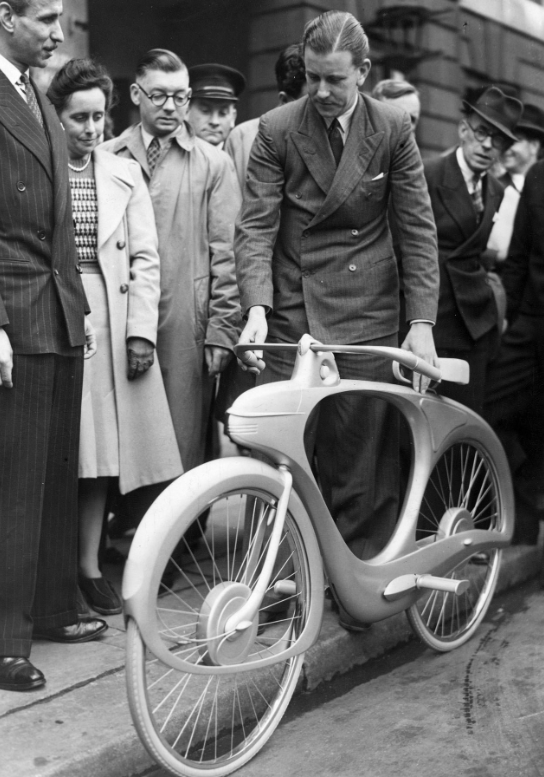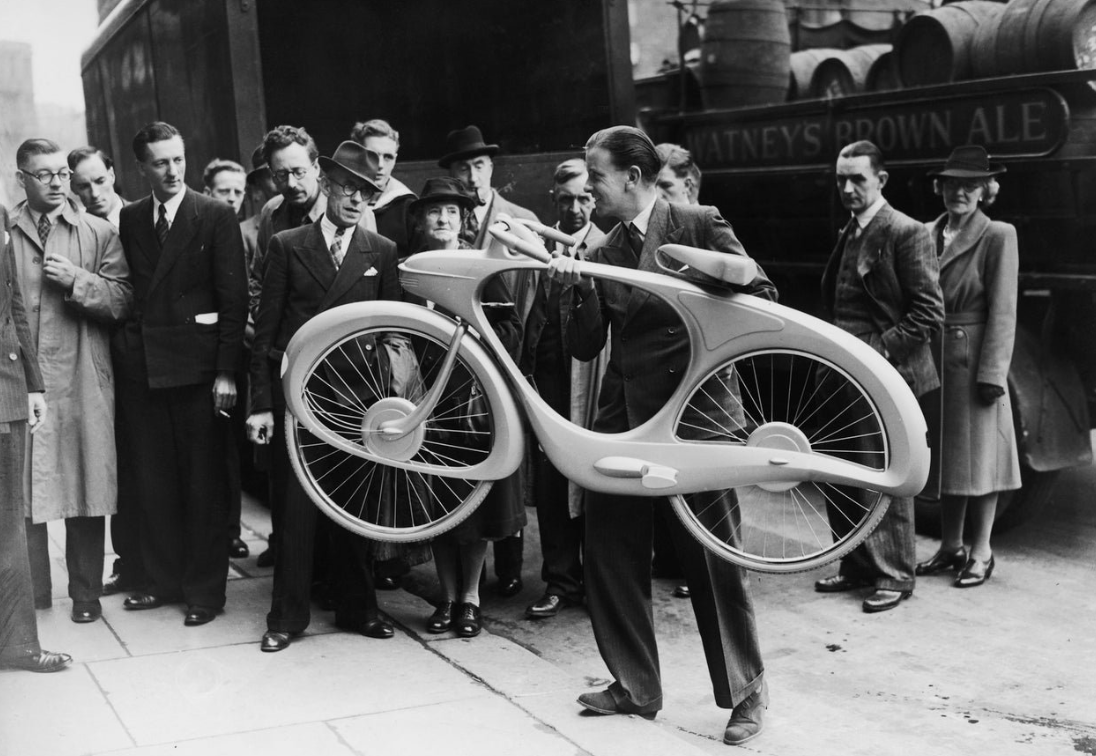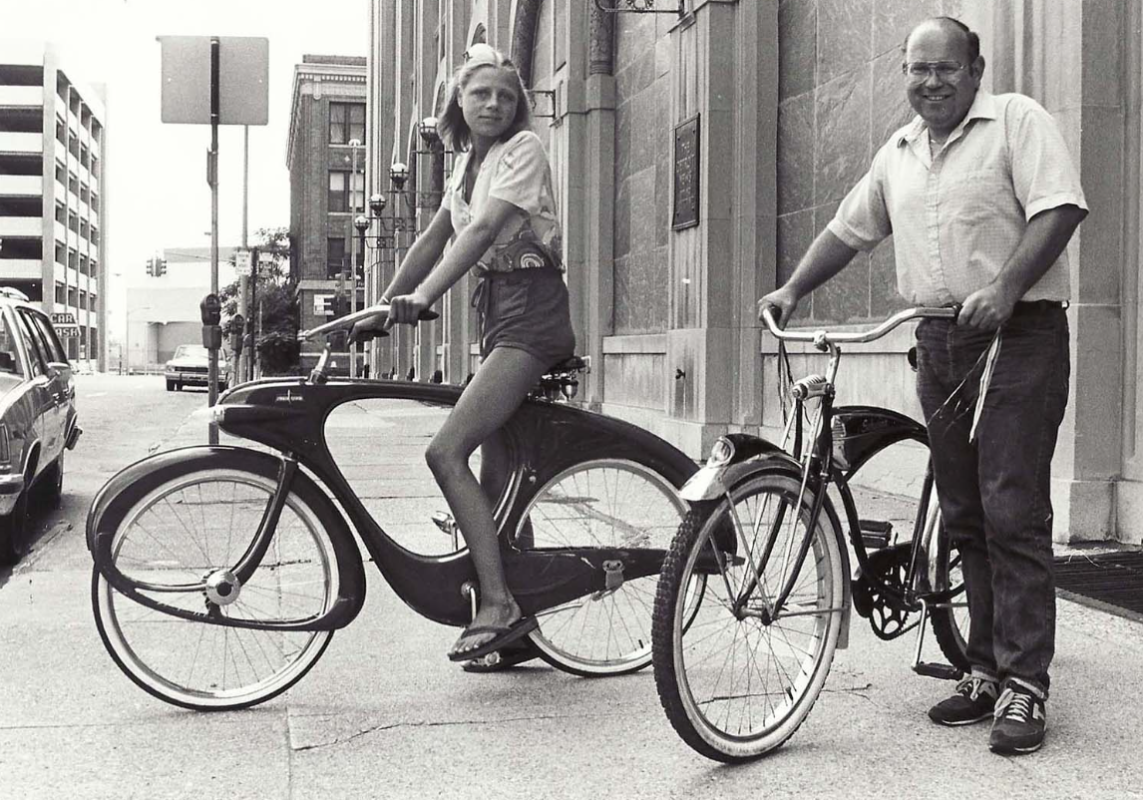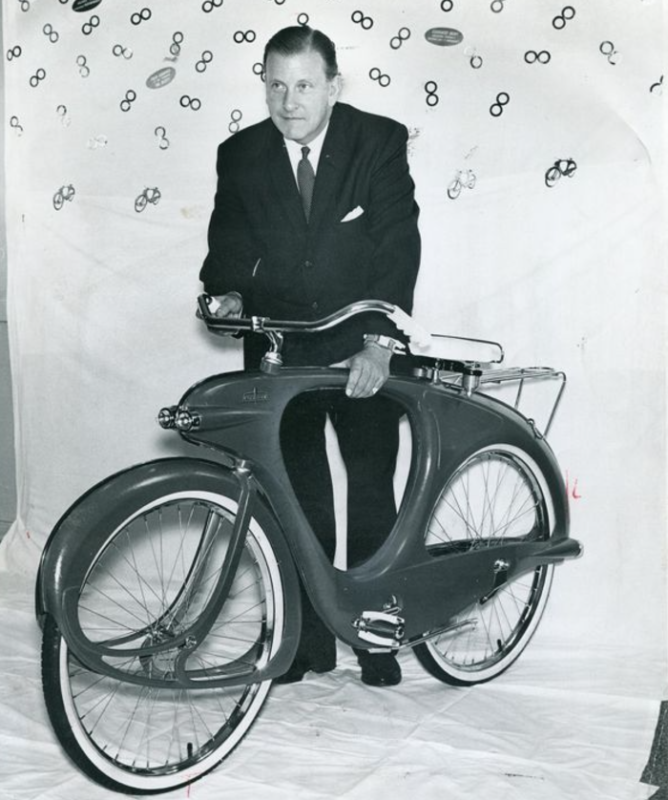The bicycle in 1946, an extraordinary concept, captured the imagination of innovators and cycling enthusiasts: the “Bicycle of the Future.” Designed with cutting-edge features that were revolutionary for its time, this bicycle represented more than just a mode of transportation—it symbolized a bold vision of design, technology, and practicality. Let’s delve into the remarkable story of this futuristic creation, exploring its design, features, and legacy. Let’s explore this 1946 bicycle with archeology.dulichvn.net
The Birth of a Vision: A Bicycle in 1946
1. Context of the Post-War Era
The year 1946 was a period of rebuilding and innovation after the Second World War. Technological advancements from the war spilled into civilian industries, inspiring creative designs across many fields, including transportation. The idea of a “Bicycle of the Future” reflected this optimistic spirit, aiming to blend functionality with style.

2. Who designed the bicycle?
The brain behind this futuristic concept remains somewhat enigmatic, but it is clear that the design embodied the ideals of forward-thinking engineers and designers of the time. The bike was a blend of aerodynamics, modern materials, and practical accessories tailored to meet the needs of post-war society.
3. Purpose of the Design
This bicycle wasn’t just about aesthetics; it was created with utility and convenience in mind. Designers sought to make cycling more appealing for daily use, particularly for urban commuters looking for a practical yet stylish means of transportation.
See more: The Bowder Stone: A Natural Wonder of the Lake District
Innovative Features of the The Bicycle in 1946
1. Aerodynamic Design
One of the most striking elements of the 1946 bicycle was its streamlined frame. The sleek design reduced wind resistance, making it faster and more efficient than traditional bicycles. It also gave the bike a modern, futuristic look that stood out in an era dominated by conventional designs.

2. Integrated Accessories
The bicycle came equipped with features that were ahead of their time, including:
- Built-in Headlights: Perfect for nighttime visibility, these lights were seamlessly integrated into the frame.
- Luggage Compartments: Small storage spaces made it easier for riders to carry personal items, appealing to commuters and errand runners.
- Protective Fenders: Designed to shield riders from mud and water, these fenders added a practical touch to the sleek design.
3. Durable Materials
The frame was constructed from lightweight yet durable materials, ensuring both longevity and easy handling. This focus on quality demonstrated a forward-thinking approach to sustainability and user convenience.
See more: The 2,000-Year-Old Roman Handprint in Cherchell
Public Reception and Impact a Bicycle in 1946
1. Initial Enthusiasm
When the concept was introduced, it garnered widespread attention and admiration. The bicycle was featured in magazines and exhibitions, celebrated as a symbol of innovation and modernity.

2. Practical Limitations
Despite its futuristic appeal, the bicycle faced challenges in mass production. The advanced features and materials made it expensive to produce, limiting its accessibility to the general public.
3. Influence on Future Designs
While the “Bicycle of the Future” didn’t achieve mainstream success, its design inspired subsequent innovations in the cycling industry. Many of its features, such as integrated lighting and aerodynamic frames, became standard elements in modern bicycles.
The Legacy The 1946 Bicycle
1. A Symbol of Optimism
The bicycle remains a testament to the optimism and creativity of the post-war era. It reflects a time when designers dared to dream big and push the boundaries of what was possible.

2. Impact on Urban Mobility
Though it didn’t revolutionize the market, the bicycle’s emphasis on practicality and style influenced the development of urban commuter bikes. Its legacy can be seen in today’s focus on sustainable and efficient transportation solutions.
3. A Collectible Treasure
For collectors and enthusiasts, the “Bicycle of the Future” is a rare and valuable piece of cycling history. Its unique design and innovative features make it a sought-after artifact that continues to ccaptureimaginations.
Unraveling the Mystery The 1946 Bicycle: Why Was It Forgotten?
1. Production Challenges
The high cost of manufacturing and the complexity of its design made it difficult to produce at scale. In a post-war economy, practicality often outweighed innovation, limiting its commercial success.

2. Lack of Market Readiness
The concept may have been ahead of its time, introduced to a market that wasn’t fully ready to embrace such radical changes in bicycle design.
3. Competition from Traditional Models
Conventional bicycles, which were cheaper and more familiar to consumers, continued to dominate the market, leaving little room for experimental designs like this one.
Conclusion: A Vision That Lives On
The bicycle in 1946 remains an enduring symbol of ingenuity and ambition. While it didn’t achieve the widespread impact its creators may have hoped for, it paved the way for modern innovations in cycling.

CÁC TIN KHÁC
Mark Twain & Olivia Langdon: A 36-Year Love Story Filled with Laughter and Devotion
The Tollund Man: A 2,400-Year-Old Mystery Preserved in a Danish Bog
Skara Brae: Scotland’s Hidden Neolithic Village
Porta Nigra: The Hidden Depths of Trier’s Iconic Roman Gate